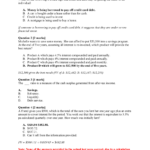Mastering Your Investment Strategy At Retirement: Secure Your Future With Smart Choices
Investment Strategy at Retirement: Securing a Comfortable Future
As individuals near the stage of retirement, one significant concern that often arises is how to ensure a financially stable future. With the absence of a regular income, it becomes imperative to have a well-thought-out investment strategy at retirement. This strategy serves as a roadmap to optimize the use of accumulated savings and assets, ensuring a comfortable retirement for oneself and loved ones. In this article, we will explore the various aspects of investment strategy at retirement, including its importance, different types, key considerations, and frequently asked questions.
What is an Investment Strategy at Retirement?
An investment strategy at retirement refers to the plan and approach adopted by individuals to manage their finances after they retire from active employment. It involves making wise investment decisions that will generate a steady income stream to support living expenses during retirement. This strategy is crucial as it helps individuals maximize their retirement savings and minimize financial risks that may arise due to inflation, market fluctuations, and other unforeseen circumstances.
3 Picture Gallery: Mastering Your Investment Strategy At Retirement: Secure Your Future With Smart Choices



Who Needs an Investment Strategy at Retirement?
The need for an investment strategy at retirement applies to anyone who wishes to maintain their desired standard of living post-retirement. Regardless of the amount saved, it is crucial to have a clear plan in place to ensure financial security in the later years of life. Whether you have a substantial retirement fund or limited savings, an investment strategy can help make the most of the available resources and safeguard against any potential financial challenges.
When Should You Start Planning?

Image Source: schwab.com
The ideal time to start planning for your investment strategy at retirement is as early as possible. The sooner you begin, the greater the potential for growth and building a substantial retirement fund. However, if you find yourself approaching retirement age without a plan in place, it is never too late to start. With proper guidance and the right investment options, you can still make significant strides towards securing a comfortable future.
Where Should You Invest?
When it comes to investing for retirement, there are various options to consider based on your risk tolerance, financial goals, and timeline. Some common investment avenues include stocks, bonds, mutual funds, real estate, and annuities. Diversifying your investments across multiple asset classes can help mitigate risk and increase the potential for higher returns. Consulting a financial advisor can provide valuable insights and recommendations tailored to your specific needs.
Why is an Investment Strategy at Retirement Important?
Having a well-defined investment strategy at retirement is vital for several reasons:

Image Source: prosolution.com.au
Financial Security: An investment strategy ensures a steady income stream during retirement, reducing the risk of financial instability.
Inflation Protection: By making informed investment decisions, you can stay ahead of inflation and maintain the purchasing power of your savings.
Asset Preservation: An investment strategy helps safeguard your assets and ensures they last throughout your retirement years, allowing you to leave a legacy for your loved ones.
Peace of Mind: With a solid investment plan in place, you can enjoy retirement without constantly worrying about your financial situation.
How to Create an Investment Strategy at Retirement?
Creating an investment strategy at retirement involves several key steps:

Image Source: hdfcsales.com
Evaluate Your Financial Situation: Determine your current financial position, including your savings, assets, debts, and expected retirement expenses.
Set Realistic Goals: Define your financial goals for retirement, such as the desired annual income, travel plans, healthcare expenses, and any other significant expenses.
Assess Risk Tolerance: Understand your risk tolerance and investment preferences to identify suitable investment options.
Diversify Your Portfolio: Spread your investments across various asset classes to reduce risk and maximize returns.
Regularly Review and Adjust: Continuously monitor your investments and make necessary adjustments based on market conditions, changes in personal circumstances, and financial goals.
Frequently Asked Questions
Q: Can I start investing for retirement with limited funds?
A: Absolutely! There are investment options available for individuals with limited funds. Consider starting with a retirement account specifically designed for small contributions, such as a Roth IRA.
Q: Should I seek professional advice for my investment strategy?
A: Consulting a financial advisor can be highly beneficial, especially if you are unfamiliar with investment markets or require personalized guidance.
Q: Is it possible to change my investment strategy after retirement?
A: Yes, it is possible to modify your investment strategy after retirement. However, it is advisable to do so cautiously and seek professional advice to minimize any potential risks.
Conclusion
An investment strategy at retirement is a crucial component in ensuring a financially secure and comfortable future. By carefully assessing your financial situation, setting realistic goals, and diversifying your portfolio, you can navigate the complexities of retirement investing with confidence. Remember to regularly review and adjust your investment strategy to align with changing circumstances and market conditions. With proper planning and a well-executed strategy, you can enjoy the fruits of your labor and embrace retirement with peace of mind.
This post topic: Personal Finance



